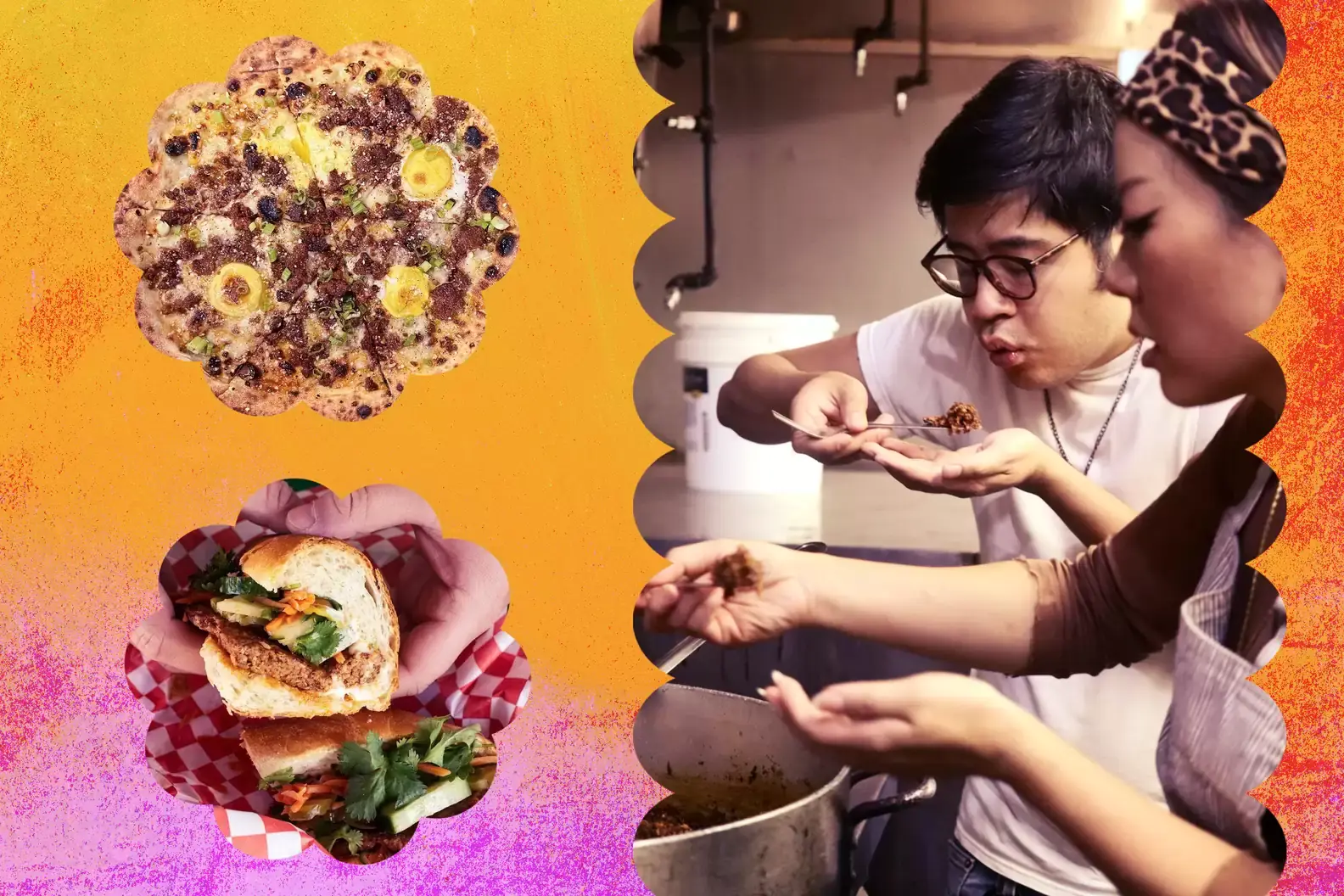Want to listen to the article? Great--listen here!
A hybrid dish born out of solidarity has launched a food and arts movement.
Feng-Feng Yeh became passionate about Chinese chorizo during the 2020 pandemic shutdowns. “Food is a carrier, a message to speak to people,” says Yeh, a multidisciplinary artist in Tucson, Arizona who previously worked as an executive chef in New York City. Some two years after she started exploring culinary historical records, she founded the Chinese Chorizo Project, a food festival and multicultural movement devoted to this distinctly Sonoran delicacy.
So, what is Chinese chorizo, exactly? A fusion food created by immigrant groups in the Sonoran desert from the 1880s to 1960s, Chinese chorizo is ground pork flavored with spices designed to appeal to Mexican clientele and sold by Chinese grocers. It’s related to Spanish chorizo, but is considerably spicier, uses Mexican chilies in place of smoked paprika, and is usually sold in bulk rather than links.
“Chorizo is a working class food made from the remains of whatever beast you’re getting your meat from. Whatever was discarded such as entrails or intestines, glands, liver parts, tendons, and tongue is ground into a meat-looking product,” explains Carlos Valenzuela, a Mexican and Indigenous Tucsonan mosaic artist who collaborated with Yeh during the festival.

Yeh believes this sort of ingenuity is an important part of Tucson food culture. Born in New Mexico to Taiwanese immigrant parents, she moved to Arizona when she was four years old. One of few Asian American students in her school, she felt her childhood education had a Eurocentric lens. Through her own research, she learned that there were 100 Chinese-owned grocery stores in downtown Tucson in the 1940s. She believes those immigrants’ impact on local culture was largely ignored when the city was named a UNESCO City of Gastronomy in 2015. “The branding of Chinese food still has a stigma,” Yeh says.
Through her work with the Chinese Chorizo Project, Yeh aims to demonstrate how immigrant communities influence food and culture. It’s part of a larger movement to reclaim narratives about heritage cuisines, ranging from Chef Sheldon Simeon in Maui to Indigenous chef and activist Sean Sherman. It’s a powerful moment for historians, food professionals, and anyone who cares about the story behind what’s on their plate.
Link to original article
Link to original article
